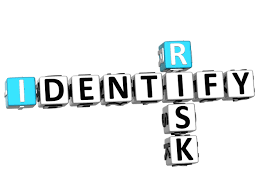Risk identification and assessment are fundamental components of risk management in banks and financial markets. These processes involve systematically identifying and evaluating risks faced by institutions to understand their nature, potential impact, and likelihood of occurrence. Here are key steps and considerations in risk identification and assessment:
- Risk Identification: The first step in risk management is identifying potential risks. This involves a comprehensive and systematic review of the institution’s activities, processes, and external factors that may give rise to risks. Common sources of risks in banks and financial markets include credit risk, market risk, liquidity risk, operational risk, legal and regulatory risk, reputational risk, and strategic risk. Risk identification can be facilitated through risk assessments, workshops, interviews, and analysis of historical data and industry trends.
- Categorization and Classification: Once risks are identified, they are typically categorized and classified based on their nature and characteristics. This helps in better understanding and organization of risks for subsequent analysis and mitigation. For example, risks may be classified as financial risks, non-financial risks, internal risks, external risks, systemic risks, or specific risks related to particular products or services.
- Risk Description and Documentation: Each identified risk should be clearly described and documented. This includes capturing the nature of the risk, its potential causes and consequences, and any relevant contextual information. This documentation provides a common understanding of the risks across the institution and serves as a reference for further analysis and decision-making.
- Risk Impact Assessment: The next step is assessing the potential impact of each identified risk on the institution. This involves evaluating the potential financial, operational, reputational, and regulatory consequences that may result from the occurrence of the risk. The impact assessment may consider factors such as potential losses, customer impact, regulatory fines, legal liabilities, and damage to the institution’s reputation.
- Risk Likelihood Assessment: In addition to assessing the impact, the likelihood or probability of each risk occurrence is evaluated. This involves analyzing historical data, industry trends, internal controls, and other relevant factors to determine the likelihood of the risk materializing. Likelihood assessment can be qualitative (e.g., low, medium, high) or quantitative (e.g., probability percentages).
- Risk Prioritization: After assessing the impact and likelihood, risks are prioritized based on their significance and potential impact on the institution. Risks with high potential impact and likelihood are typically given higher priority for further analysis and mitigation. Prioritization helps allocate resources effectively and focus risk management efforts on the most critical risks.
- Risk Assessment Tools and Techniques: Various tools and techniques can be used to support the risk identification and assessment process. This may include risk registers, risk matrices, risk heat maps, scenario analysis, sensitivity analysis, and statistical models. These tools help structure the assessment and provide a visual representation of the risk landscape.
- Ongoing Monitoring and Review: Risk identification and assessment should be an ongoing process. Risks evolve over time due to changes in internal and external factors, market conditions, and emerging risks. Financial institutions should establish mechanisms to continuously monitor and review their risk profiles, ensuring that new risks are identified and existing risks are reassessed periodically.
- Integration with Risk Management Framework: Risk identification and assessment activities should be integrated into the overall risk management framework of the institution. This ensures that identified risks are appropriately linked to risk mitigation strategies, risk appetite, risk limits, and other risk management processes. Integration promotes a holistic and consistent approach to managing risks across the institution.
- External Inputs and Industry Insights: Financial institutions should also consider external inputs and industry insights in their risk identification and assessment processes. This includes staying updated on regulatory changes, industry trends, emerging risks, and lessons learned from risk incidents in the sector. Engaging with industry associations, regulatory bodies, and risk management networks can provide valuable insights and benchmarks for risk assessments.
By effectively identifying and assessing risks, banks and financial institutions can gain a comprehensive understanding of their risk profile and develop appropriate risk mitigation strategies. These processes serve as the basis for making informed decisions, allocating resources, and implementing effective risk management practices.
SHARE
